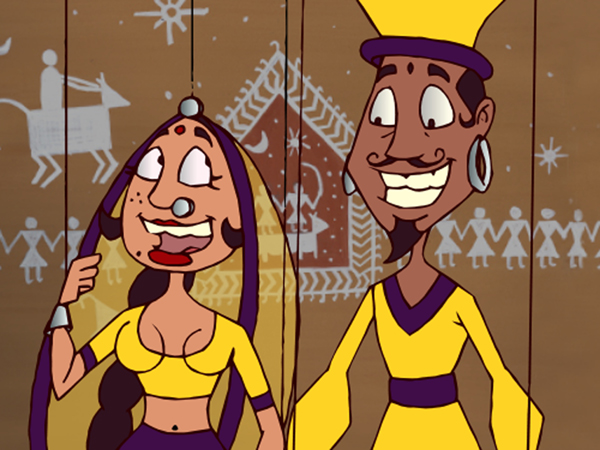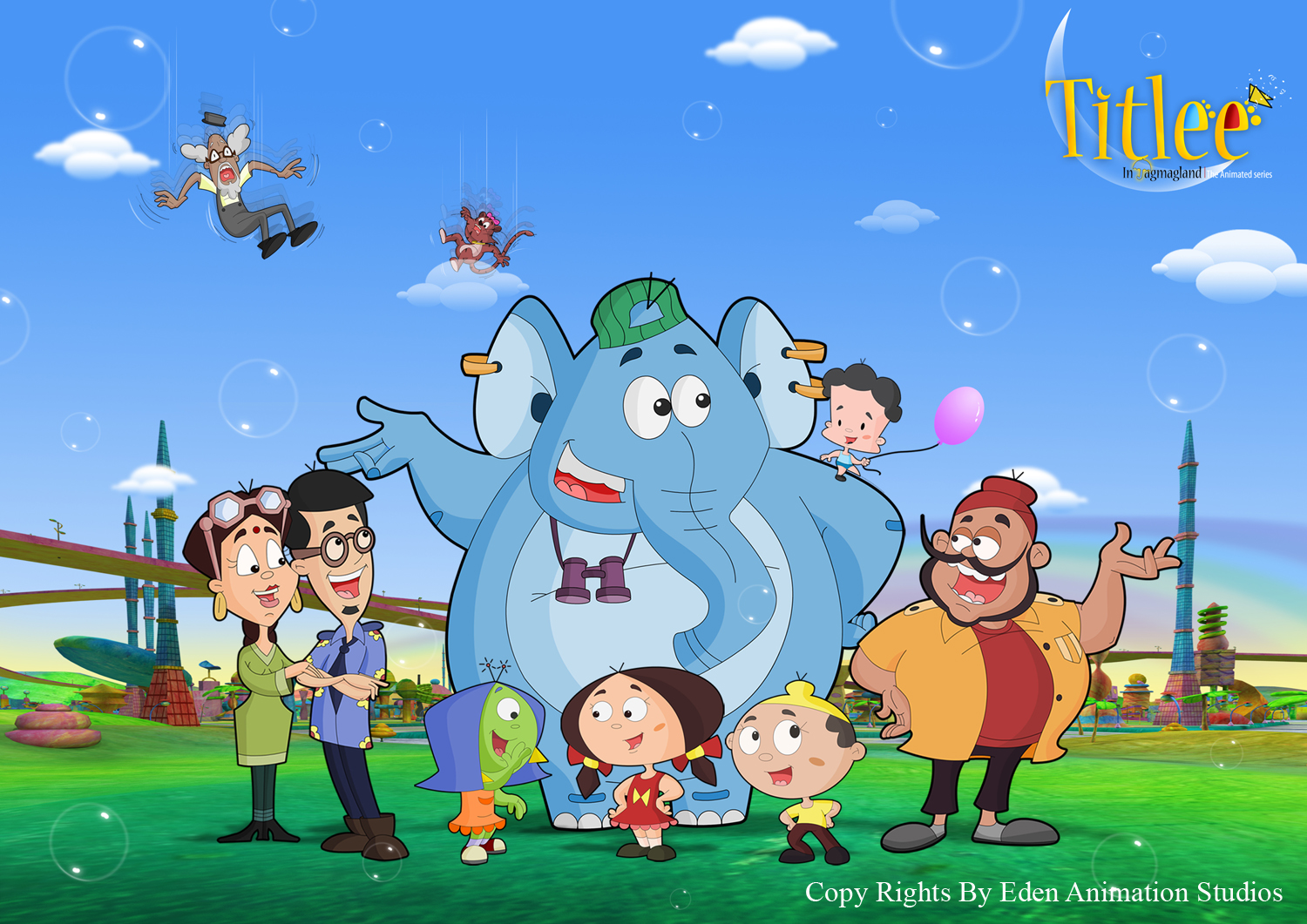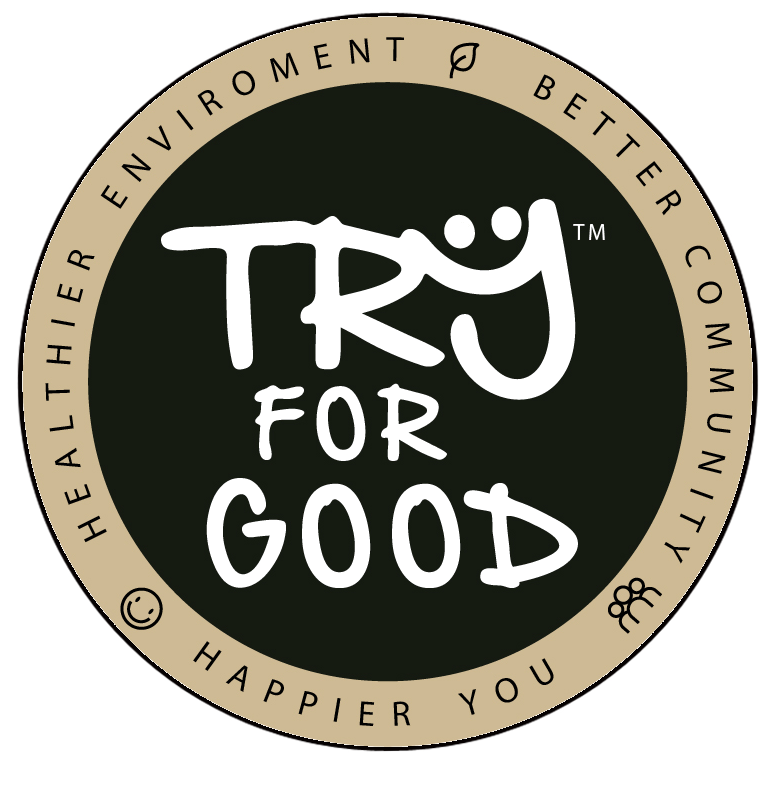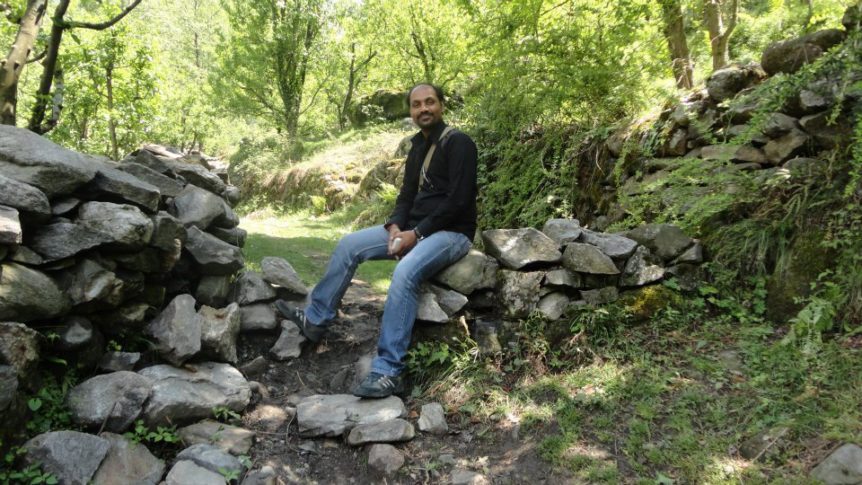Education has a huge role to play in building a society. What starts from conditioning from home gets a strong character from the Institutes. And there is something even above i.e. Life itself. The observations and thoughts when take a form of a story to come alive on some medium, lessons worth sharing shape up. Such a strong medium is today’s “digital communication”. Dr. Vibhuti Pandya, Head of Deptt. Animation & Multimedia, Birla Institute of Technology discusses with Dr. Anju about this medium and its scope in sustainability to conserve environment and design better societies. Dr. Vibhuti has executed many State, National and International level comic/animation projects. He has received awards and accolades for his designs and cartoon illustrations.
Dr. Anju: Foremost, please describe the scope of “Digital Art and Communication”
Dr. Vibhuti: Digital technology is present in every sector today. At our Institute we train students in animation and multimedia i.e. all digital technologies. The broad perception of scope of digital media technologies or animation is often linked with cartoon movies or entertainment stretching maximum to gaming. But in past about a decade or so, its scope is extended in almost every sphere. Be it real estate walk throughs, architectural designs and perspectives, media services i.e. graphics, news, advertisements, social media, events, entertainment, mobile or web app design, e-learning or even defense or forensic sciences.
Our students got selected in medical fields; people can’t relate to this opportunity as a career when they learn design and multimedia. But science has unbound scope for learning through it. For the internal organs study where dissections are limited or prohibited, the e-learning modules come not just handy but amazingly detail oriented to sustain interest of audiences which they can go over again and again.
Dr. Anju: What are the constraints or pros and cons of this medium or technology in education per se?
Dr. Vibhuti: This is an expansive technology and is very dynamic. As for Institutes we always face the challenge to keep abreast. Because we have to work on syllabus and often by the time we arrive at it, there are newer versions already.
While there are so many upsides to this fast penetrating medium for wider reach and exposure, the other big challenge is the viewer discretion. Up until a few decades, parents could control TV channels, then the Internet, but now with the mobiles it really gets challenging to control the exposure. Kids from educated and uneducated families are all watching variety content from various media. Educated parents may still control viewerships, but in our country and so many developing countries there are so many uneducated parents- far from being tech savvy. There is a potential risk. Filtration is important!
Also, the “digital art” is created with the intent of multiplying, reducing the hand created job. But the hand art can never be replaced! A hand painting by M.F. Hussain will remain a unique piece, even if its digitally reproduced versions are there. With digitization also came in piracy, which is a killer for artists. Artists’ hard work must be respected and we as artists must protect our work through copyrights.
 A pinch that I strongly feel about is also the loss of cultural exposure and values through the content that is served to our kids. Even in so many years, it has only been “Chhota Bheem” as some popular Indian cartoon entertainment for kids. Else it has been all the Chinese, Japanese and Korean content which takes our kids far from our culture. They cannot associate themselves with the landscapes, the seasons, the attires and the food habits but they watch these cartoon series. This gets quite confusing for them. Our own Indian culture has great diversity and volumes of mythological stories that are so much untapped, because of budget constraints and deeper penetration of the oriental series. I believe Indian channels can be more responsible for the content for kids here. As for adults, there are so many programs developed based on demand, that are original, modified or dubbed but kids are not being served the right way. Channels buy foreign cartoons at much cheaper prices. There can be some government policies to regulate it.
A pinch that I strongly feel about is also the loss of cultural exposure and values through the content that is served to our kids. Even in so many years, it has only been “Chhota Bheem” as some popular Indian cartoon entertainment for kids. Else it has been all the Chinese, Japanese and Korean content which takes our kids far from our culture. They cannot associate themselves with the landscapes, the seasons, the attires and the food habits but they watch these cartoon series. This gets quite confusing for them. Our own Indian culture has great diversity and volumes of mythological stories that are so much untapped, because of budget constraints and deeper penetration of the oriental series. I believe Indian channels can be more responsible for the content for kids here. As for adults, there are so many programs developed based on demand, that are original, modified or dubbed but kids are not being served the right way. Channels buy foreign cartoons at much cheaper prices. There can be some government policies to regulate it.
Dr. Anju: Interesting last point, do you think the movie “Bahubali” makes a turning point for Indian Industry in this regard?
Dr. Vibhuti: Yes, definitely, Bahubali has been a stepping stone with back-to-back two blockbusters for Indian VFX. Up until now we all used to look at foreign films for this kind of work. But now we do see its increasing usage in Indian mythological serials.
India is fast emerging as a hub for VFX with its highly skilled labor, low cost production and English speaking population. In 2000 we were hardly any figure to count on but today we are a USD 1.5 billion industry growing at annual rate of 12-13%. Next gen has really big advantage. We incur lowest costs in the world with a very qualitative output.
India has stories, skills and now also the economic power. Interests must soar.
Dr. Anju: What about its scope in Societal communication, for good causes such as conserving environment or creating better values in society?
Dr. Vibhuti: You make a very strong point here. And I truly feel that all of us can be more responsible and contributing in our capacity. Mostly, movies or concepts are created for commercial success. Rarely, would there be a combination as societal communication or responsible communications as it usually turn people off and thus has limited commercial visability. But I see that you also use humor, creating cartoons etc. as you build awareness. Such practices, enhancing the entertainment value in messaging can definitely make people associate with such topics better- whether it is a tutorial, animation, advertisement or a motion picture.
As far educational Institutes, they can really engage students in such awareness build projects. I feel this is our responsibility to orient students that way. Somehow, students also want to get up close to the highly successful and entertaining projects. But in their portfolio there can be room for good for cause projects. They can send them to film festivals or even share on social media.
Mostly such projects do not have great funding. Here Government and entrepreneurs can come forward. In general people must look beyond rewards and awards to spread out such messages. Now with the power of communication and cameras in every hand, we are all empowered to impact societies positively.
Also not every project is very costly. Some of them can be done with shoestring budget. It all depends upon the number of characters or frames that you create. A producer or a director can minimize all that hardwork to reduce budgets and yet get very effective and powerful output. Planning is the most important part. Unnecessary details can be cut down from the core messaging to save on costs.
Dr. Anju: Of course, one of my favorite examples is an animation by THE MAN by Steve Cutts. Simple cartoon story but a master piece. Could you share some notable good for cause movies done at your Institute or by some students
Dr. Vibhuti: Certainly! There are a lot of other activities which we do with students at our Academic Institutes where I get the opportunity to visualize, edit, direct and organize workshops.
We had created some films with the Govt. of Rajasthan sharing the same keynote that the message has to be entertaining to appeal people, else people switch channels. So I had given proposal for making entertaining value messages. We did three films for Doordarshan- one was Hamara Aspatal (Our Hospital), animation about building awareness for medical waste management by segregating bio waste and general waste. Another one was ‘Rogi Mitra’(Patient Counselor), where villagers who tend to get lost in the large hospitals for directions, get counseled. The other one was also a mass communication product to build awareness about Below poverty line card and its medical facilities and healthcare benefits in 2009. They were all widely appreciated.
 We are glad to contribute to ‘Save the Children Foundation.’ In 2010, the organization published an illustrative book “Sajjanpur Ki Asha Aur Uchit Poshan” which was designed by me. I also did an illustrative book on “Bal Shoshan Kya Hai…?” “In 2016 Meri Kahani Comics Ki Jubani was edited by me published by them. It was a beautiful result of 4 days workshop of adolescents at Naya Gaon, Alwar. where I gave them visualization and comic development training. Animation films are loved by all and they have a huge potential of conveying social messages. “For Sale” was such a film to evoke emotions in the children kidnappers and sellers. It was designed and directed by me in 2004.
We are glad to contribute to ‘Save the Children Foundation.’ In 2010, the organization published an illustrative book “Sajjanpur Ki Asha Aur Uchit Poshan” which was designed by me. I also did an illustrative book on “Bal Shoshan Kya Hai…?” “In 2016 Meri Kahani Comics Ki Jubani was edited by me published by them. It was a beautiful result of 4 days workshop of adolescents at Naya Gaon, Alwar. where I gave them visualization and comic development training. Animation films are loved by all and they have a huge potential of conveying social messages. “For Sale” was such a film to evoke emotions in the children kidnappers and sellers. It was designed and directed by me in 2004.

At our Birla Institute of Technology, Animation & Multimedia Department, Jaipur Campus, we did Animated Cartoon Series of 26 Episodes “Titlee in Jugmugland.” Here Titlee and her friends get in to various incidents and learn many things about nature and its importance, social and moral values and importance of love, empathy, friendship. To share about rising traffic and risks on roads with reckless driving and overloaded traffic is addressed in a short film “Latke-Jhatkey.” The film was awarded in Inspire Kalam International Film Festival 2016.

Likewise, IDC Mumbai does a lot for social messages. A student created “Chashni” – a movie on victims of acid attackers. There is also a movie “Good Morning Mumbai” done by a student at NID film. It is about sanitation and Mumbai chawls and slums.

